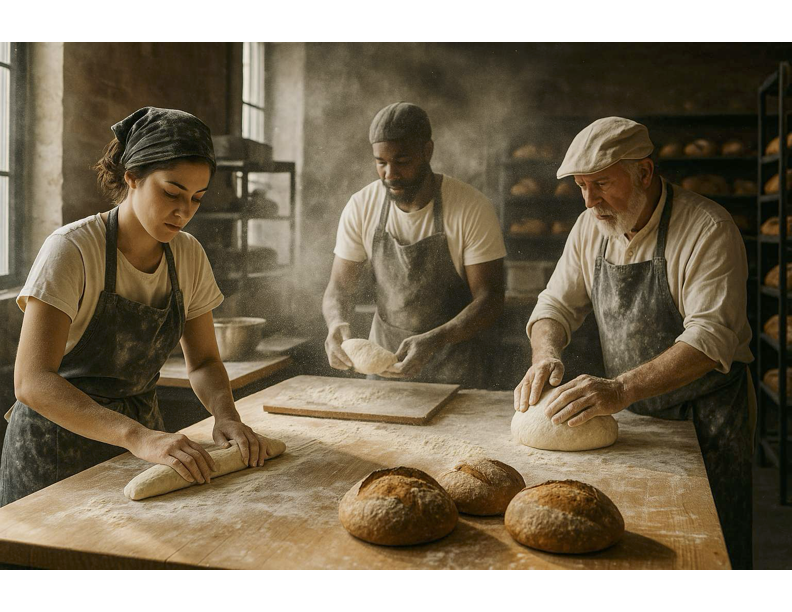Bread isn’t just flour and water. It’s time, patience, and knowing when to let the dough rest—and when to push it.
Here’s what actually goes into making our bread:
1. Good Ingredients, No Shortcuts
We start with basics, but we don’t treat them like afterthoughts. Flour matters. We use stone-milled, unbleached flour with nothing stripped out. Water is filtered. Salt is clean. And for sourdoughs, our starter is alive and well-fed—no instant yeast shortcuts. Everything is chosen for flavor and integrity.
2. Time Is a Key Ingredient
Fast bread is flat bread—flavorless and forgettable. We give our dough the time it needs to ferment, to develop deep flavor and the right texture. Some loaves take 24 hours from mix to bake. That’s not laziness. That’s craft.
3. Hands On, Always
Machines help, but they don’t shape a loaf. We mix and fold by hand when it matters. We shape every loaf by feel. If the dough’s too tight, it won’t rise right. Too loose, and it collapses. This part isn’t automated because it can’t be.
4. The Heat Has to Be Right
We bake in deck ovens with real stone, not convection. That means radiant heat, real crust, real color. The oven spring (that moment when the dough leaps up in the heat) is where all the fermentation work pays off. You can smell the difference.
5. Discipline Meets Instinct
Making bread is part science, part gut feeling. Weather affects it. Humidity matters. The same recipe behaves differently on a rainy day. So we adjust—more water, less proofing time, maybe a different shaping technique. We don’t guess. We observe.
6. No Two Bakes Are the Same
Even with discipline, no batch is identical. That’s not a flaw. That’s the beauty. Our bread has a soul because it's made by humans, not programmed in a factory.
Final Word
Bread like ours isn’t made just to fill you up. It’s made to be noticed. To be torn by hand, shared around the table, toasted in the morning. It’s simple food, made the hard way—because that’s the only way to make it good.

